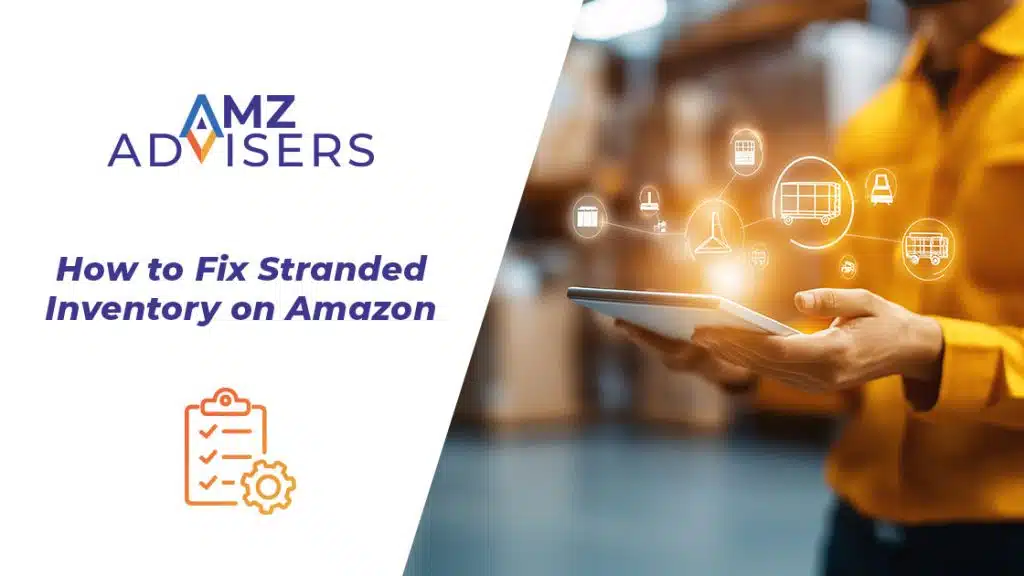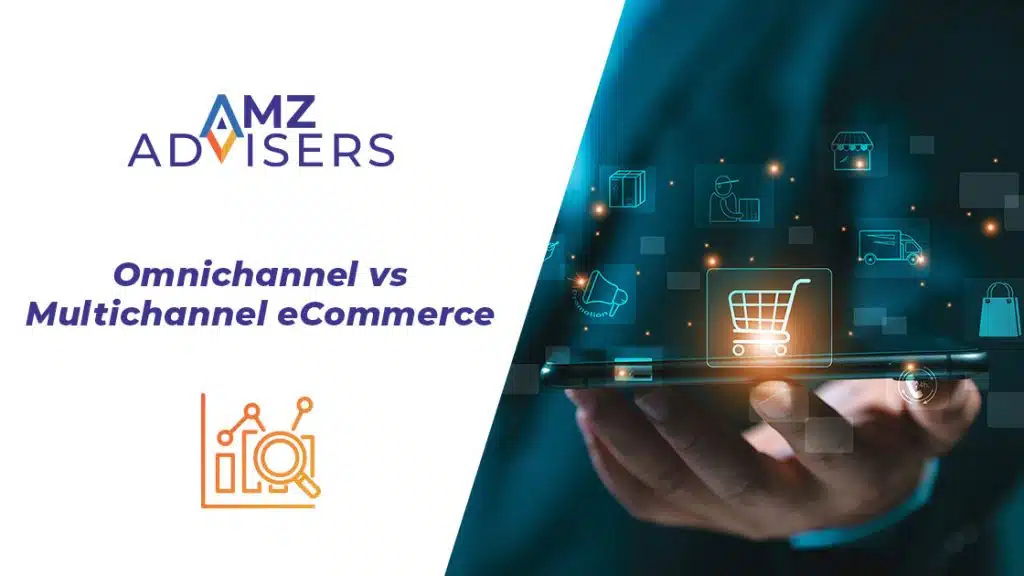There are ways to save on Amazon shipping fees. Understanding and identifying them before creating your shipping strategy is critical.
One of the many reasons buyers choose Amazon is its fast and affordable shipping. However, these shipping benefits come with a severe price tag: Amazon’s shipping costs 89.5 billion USD. Someone must pay these costs; often, it’s sellers.
Amazon may charge you different shipping fees, including shipping returned items. Fortunately, you have more control over your Amazon shipping costs than expected. But if you don’t track these charges, they can affect your bottom line.
How Does Amazon Calculate Shipping Fees?
Amazon pre-calculates shipping rates automatically after a customer purchases an item. There are numerous factors that determine shipping fees, including your selling plan and the type of products you sell.
If you have an individual selling plan, Amazon will take a portion of your sale toward variable closing fees (VCF), which includes shipping costs. This fee varies between $0.45 and $1.35 depending on the product.
If you choose the Pro Merchant selling plan, you can avoid VCF costs. That said, sellers who use Amazon FBA must still pay shipping fees based on the weight and size of their products.

Different Types of Amazon Shipping Fees
While buyers are typically the ones who pay for shipping fees, sellers also fork over shipping expenses. That said, there are times when Amazon will apply a shipping chargeback to sellers.
Here are some shipping fees and chargebacks you can expect:
- FBA shipping fees. Amazon FBA is a service that stores, packs, and ships products for sellers. Amazon charges FBA brands numerous fees, such as costs to ship parcels to warehouses, and shipping charges per order, depending on the product type and the package weight.
- Inbound shipping fees. Inbound placement is an FBA option where sellers can store products in multiple fulfillment centers nationwide. This saves costs and offers faster shipping.
- Order item fees shipping chargeback. This is a fee that Amazon subtracts from your earnings when shipping the products. That said, Amazon will also apply this fee as income and will apply a chargeback.
- Adjustment item fees shipping chargeback. The fee that buyers pay for shipping. If Amazon handles shipping, the cost will appear as a chargeback for sellers.
- Order item fees shipping HB. A referral fee that Amazon charges the seller. Amazon doesn’t charge FBA sellers this fee.
Related content: Amazon FBA Refunds
- Return items fees shipping HB. A fee charged when a customer returns an item.
- Return item fees shipping chargeback. Sellers pay a fee when a customer returns an item. Amazon may also balance this shipping fee during the transaction.
- Other transaction shipping label purchase. A fee when purchasing a shipping label from another fulfillment company on Amazon.
- Other transaction shipping label purchase for return. A fee when you purchase a return label from another company on Amazon.
- International shipping fees: Fees when shipping products to another country. Each nation has shipping fees, which vary by product type, weight, and volume. Track shipments overseas to ensure you’re not paying too much for late deliveries.
- Other unique shipping requirements. Amazon may have different shipping requirements and fees for specific items, such as electronics, DVDs, books, and CDs.
Other Types of Amazon Shipping Fees
Shipping fees aren’t always simple to understand. For example, there are different categories for shipping fees on Amazon. If you haven’t already, you may run into them eventually.
Shipping Income
Shipping income is any fee that sellers or other parties charge as an earning. However, these parties usually charge shipping income to customers.
Still, these Amazon shipping fees may appear on your statements and shipping information. These transactions include “Order Item Price Shipping” or “Item Price.”
Transport and Delivery Fees
These Amazon shipping fees are the expense FBA sellers pay to ship inventory to Amazon warehouses. FBA sellers also pay these fees if they sell via inbound placement. Storage and fulfillment Amazon seller shipping fees are also in this category.
You can find these fees on your Amazon Seller Central account and track shipping costs for your FNSKU numbers.
Taxes and VAT
Sellers may sometimes need to pay taxes and VAT on Amazon shipping fees. These charges vary by country, state, and territory.
If you’re shipping in the US, certain states require you to pay sales tax. The same applies to Europe with VAT.
Check your shipping invoices for extra taxes and VAT, and pay attention to your product’s MPN if certain products are taxed.

How to Reduce Amazon Shipping Fees
Amazon shipping fees can eat away at your profits. Fortunately, there are many ways to reduce the costs you’ll pay. Take a look at these methods to master the Amazon supply chain:
- Use your local postal service. This is an excellent way to save on Amazon FBA shipping fees. If you use FBM (fulfillment by merchant), ship through your local postal service. They’re less expensive, especially for lightweight parcels. Many local postal services even provide free boxes.
- Print shipping labels online. Printing proper shipping labels is simple and can seriously save you money. Numerous label printing services are even cheaper than Amazon.
- Consider products and volume. Amazon charges different fees for every product category and shipping volume. If you have a vast inventory, check Amazon’s product shipping rates and only sell products at affordable prices. Adjust your shipping strategy to ship items in several boxes instead of a large one.
- Negotiate with couriers. If you work with a third-party courier, find out if they offer discounts or are willing to negotiate lower shipping fees, especially if you ship large parcels.
Related Content: Amazon Expedited Shipping
- Save on packing materials. While branded boxes are a plus, you can always save on your packaging. As mentioned previously, your local postal service can provide free boxes. You can also find used boxes and packing material for cheap or free. There’s also nothing wrong with shredding old newspapers or magazines and using that as packing material.
- Increase average selling price: If you sell expensive products, you’ll pay less for shipping. At the same time, don’t mark up prices too high or you’ll lose your customers.
- Be selective with your fulfillment plan: While FBA is convenient, you can handle your fulfillment if you just started on Amazon and/or haven’t made many sales. In this case, you can use FBM to handle your shipping.
- Calculate VCF: If you use Amazon’s Individual Selling Plan, you’ll want to know how much you’ll pay in VCF. For most sellers, marking up your products or opting for the Pro Merchant plan makes more sense.
Reduce Amazon Shipping Fees
While Amazon’s shipping is affordable for buyers, sellers aren’t that lucky. Shipping fees can get pricey for sellers, and it can be tedious to budget for them. Fortunately, there are many ways to save to ensure you aren’t forking over too much in shipping expenses.
Are you still struggling to profit, even after achieving high sales on Amazon? We can look at your current strategy and offer ways to spend less and earn more.
Author
 Stephanie Jensen has been writing ecommerce content for seven years, and her copy has helped numerous stores rank on Amazon. Follow her on LinkedIn for more insight into freelance writing and creating high-quality content.
Stephanie Jensen has been writing ecommerce content for seven years, and her copy has helped numerous stores rank on Amazon. Follow her on LinkedIn for more insight into freelance writing and creating high-quality content.




